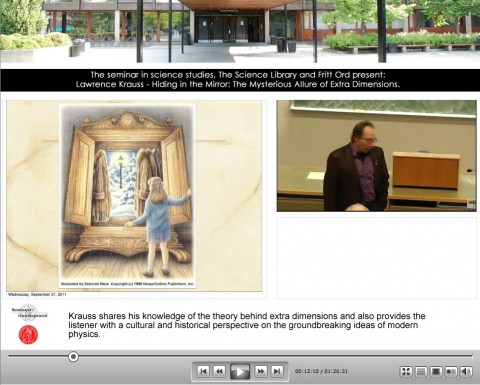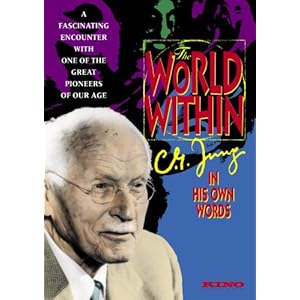This is some seriously geeky philosophy - from FORUM: QUALITATIVE SOCIAL RESEARCH, Volume 13, No. 1, Art. 20; January 2012 - that brings together two very different perspectives. Goffman was a very influential sociologist and Bakhtin was best known as a semiotician and philosopher of language, but together their theories do make a certain amount of sense.
Drawing on Bakhtin and Goffman: Toward an Epistemology that Makes Lived Experience Visible
James Cresswell & Allison Hawn
Abstract: This article seeks to enrich qualitative analysis by way of showing how Erving GOFFMAN's work can be enhanced by interfacing it with Mikhail BAKHTIN. The goal is to inspire an approach to the interpretation of human action that highlights phenomenologically immediate experience, thereby enhancing current work. BAKHTIN's later work focused on the interpretation of such experience but it was left incomplete at the time of his death. Fortunately, this latter work is reminiscent of his early work on the interpretation of poetics. The article addresses BAKHTIN's discussion of content, form, and material in art and how this discussion can enlighten our epistemological praxis with persons. By way of a demonstration, our proposed approach is applied to an online interaction between the second author and an anonymous online gamer.
Table of Contents
1. Introduction
2. Orientation: GOFFMAN and BAKHTIN
2.1 GOFFMAN and frame analysis
2.2 BAKHTIN and epistemology
3. Content
3.1 BAKHTIN's discussion of content
3.2 Implications for extending GOFFMAN
3.2.1 Interpretive Principle 1
3.2.2 Interpretive Principle 2
3.2.3 Interpretive Principle 3
4. Material and Form
4.1 BAKHTIN's discussion of material and form
4.2 Implications for extending GOFFMAN
4.2.1 Interpretive Principle 4
5. Conclusion
Acknowledgments
References
Authors
Citation
This is a passage from the introduction that sets up their thesis for this paper.
Erving GOFFMAN (1959, 1961, 1963a, 1963b, 1969, 1974) inspires qualitative methods that are often set forth as alternative approaches to a natural-scientific "cookbook" approach that attempts to apply a "recipe" to produce objectively verified results (POLKINGHORNE, 1983, p.3). His approach often rejected the standardization inherent in naturalscientific approaches, but, even though he touched on experience, he still bypassed the deeply experiential character of such realities. In particular, it will be discussed how his work, and the analyses inspired by it, tends to treat these realities as resources that can be rhetorically manipulated. That is, GOFFMAN's theories and practices were symptomatic of a potential problem in qualitative research: the treatment of experiential realities as rhetorically controllable when their verisimilar objectivity is such that they cannot be so manipulated. We will discuss how such experiential realities have a compelling quality such that they cannot be changed on such whim and our concern is that treating them as such can result in missing their deeply compelling quality. The experience of the nightclub, for example, is not something that one can just change. Understanding such a participant would require apprehending this experiential depth. It is thereby possible to extend GOFFMAN's work by illustrating this bypass and how it could be rectified. In the broader scheme of qualitative research, this discussion can serve as an illustration of how experiential realities are so compelling that researchers cannot afford to treat them as rhetorical resources, lest researchers bypass these important phenomena. [2]
We turn to Mikhail BAKHTIN because he inspires an approach that both illuminates the potential to enhance GOFFMAN and provides a way to improve on qualitative methods. He has been described by HOLQUIST, an editor and translator of much of BAKHTIN's work, as "epistemic" (2002, p.15-17). It is this largely unexplored epistemic side of BAKHTIN that we explicate in this paper. This epistemic feature of BAKHTIN had roots in his early career where he drew on the phenomenology of Max SCHELER (1970 [1913]; see CRESSWELL & TEUCHER, 2011) to address the techniques that can be used to interpret art (BAKHTIN 1990a [1979])1. Such early work on aesthetics revolved around interpreting socially constituted lived realities as they are expressed in art and so speaks to contemporary movements that draw on aesthetics beyond the realm of art to address the fundamental structure of human-constituted reality (c.f. WELSCH, 1997, pp.4-8, 48, 90-98). BAKHTIN's epistemology in regards to art was about making visible experiential realities (CRESSWELL & BAERVELDT, 2011). His later work drew on similar ideas but focused directly on the interpretation of human action (BAKHTIN, 1986a [1979]). Taking this early and later work together enables a view into his epistemology that makes visible lived realities. We will outline GOFFMAN's claims insofar as they overlap with BAKHTIN and show how points of non-coincidence illustrate the potential to enrich the former's work, shortcomings illustrative of the way that qualitative research in general can be enriched. [3]
After providing a brief orientation to the ideas of GOFFMAN and BAKHTIN, we outline a BAKHTIN-inspired epistemology. By articulating this epistemology through a discussion of BAKHTIN's early work, we can distill four principles that make visible the experienced realities that people take for granted. Each of these principles will be illustrated with an interpretation of the lived experiential reality of an on-line interaction that contrasts the results to those that would emerge from a GOFFMAN-inspired analysis. By discussing these principles in light of Erving GOFFMAN the proposal herein attempts to clarify how taken-for-granted realities that constitute experiences cannot be used rhetorically—mostly because they are deep part of how reality is experienced as-if given. [4]







 Documentary presented by Anglican priest Pete Owen Jones which explores the huge number of ancient Christian texts that didn’t make it into the New Testament. Shocking and challenging, these were works in which Jesus didn’t die, took revenge on his enemies and kissed Mary Magdalene on the mouth – a Jesus unrecognizable from that found in the traditional books of the New Testament.
Documentary presented by Anglican priest Pete Owen Jones which explores the huge number of ancient Christian texts that didn’t make it into the New Testament. Shocking and challenging, these were works in which Jesus didn’t die, took revenge on his enemies and kissed Mary Magdalene on the mouth – a Jesus unrecognizable from that found in the traditional books of the New Testament.













 This documentary looks at a group of visionary writers who changed the way we see the world – the Romantics – and examines stories of bloodshed, political upheaval and poetry.
This documentary looks at a group of visionary writers who changed the way we see the world – the Romantics – and examines stories of bloodshed, political upheaval and poetry.